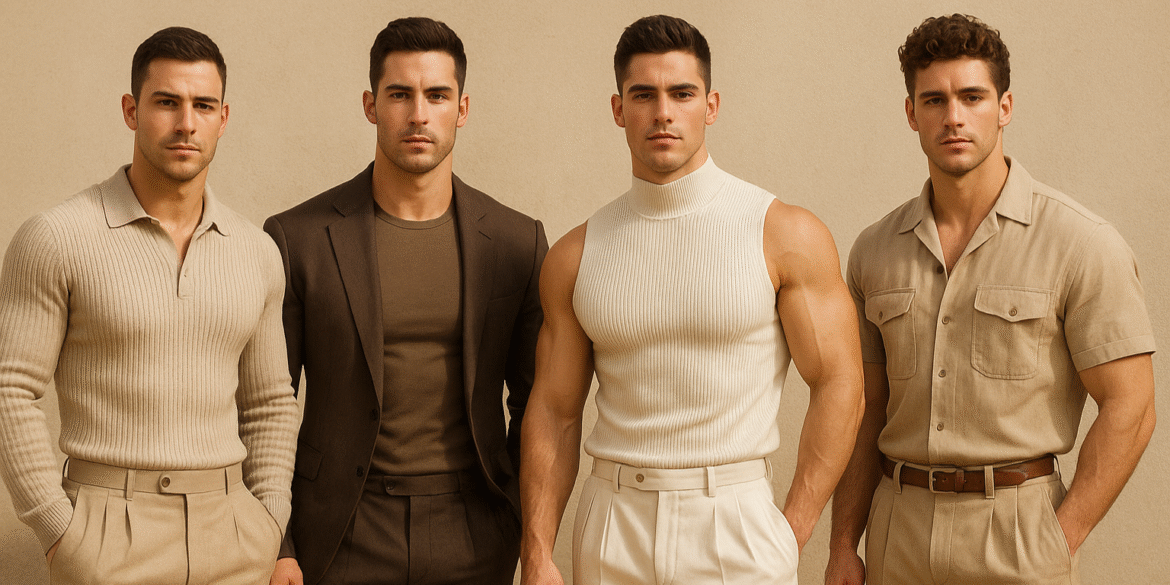In 2025, the fashion industry is witnessing the rise of a new aesthetic dubbed “Protein Chic,” a movement that intertwines health, wellness, and style. This trend emphasizes muscular physiques and gym-inspired attire, reflecting the growing influence of fitness culture on fashion. Designers like Demna and Willy Chavarria are incorporating elements such as body-hugging garments and powerlifting gear into their collections, catering to a market increasingly focused on physical appearance and strength. Social media platforms, particularly TikTok, are amplifying this trend, with influencers showcasing protein supplements, gym routines, and fashion choices that highlight muscular bodies. While the movement promotes a healthy lifestyle, it also raises concerns about unrealistic body standards and the pressure to conform to a particular physique.
The Rise of “Protein Chic”
“Protein Chic” is more than just a fashion trend; it’s a cultural phenomenon that reflects society’s growing obsession with fitness and physical appearance. The term encapsulates a style that celebrates muscularity and strength, often featuring tight-fitting clothing, athletic wear, and accessories that accentuate the physique. This movement is a response to the increasing popularity of gym culture and the widespread use of fitness supplements and performance-enhancing drugs.
Designers have taken notice of this shift in consumer interests. Demna, known for his work with Balenciaga, has incorporated gym-inspired elements into his collections, including oversized hoodies and body-conscious silhouettes that mimic athletic wear. Similarly, Willy Chavarria’s Fall/Winter 2025 collection showcased muscular silhouettes and powerlifting gear, celebrating strength and resilience. These designers are tapping into a market that values both fashion and fitness, creating garments that cater to the modern man’s desire to showcase his physical prowess.
Social Media’s Role in Amplifying the Trend
Platforms like TikTok have played a significant role in popularizing “Protein Chic.” Influencers and fitness enthusiasts share workout routines, supplement reviews, and fashion tips that highlight muscular bodies. Hashtags like #GymTok and #ProteinChic have garnered millions of views, creating a community where fitness and fashion intersect. This digital space allows individuals to showcase their physiques and fashion choices, influencing trends and setting new standards for male beauty.
The visual nature of TikTok makes it an ideal platform for this trend. Users post short videos demonstrating exercises, modeling outfits, and discussing their fitness journeys. These videos often go viral, reaching a wide audience and influencing fashion choices. The emphasis on aesthetics and physique in these videos reinforces the ideals of “Protein Chic,” encouraging others to adopt similar styles and routines.
The Impact on Men’s Fashion
“Protein Chic” is redefining men’s fashion by merging athletic wear with everyday clothing. Garments such as tank tops, short shorts, and muscle tees have become staples in men’s wardrobes, reflecting the desire to display one’s physique. These pieces are often made from materials that offer both comfort and stretch, allowing for ease of movement and a flattering fit. The trend also embraces bold colors and graphic designs, adding a dynamic element to men’s fashion.
Retailers and brands are capitalizing on this trend by offering collections that cater to the “Protein Chic” aesthetic. Collaborations between fashion houses and fitness brands have resulted in limited-edition lines that blend style and performance. These collaborations often feature high-performance fabrics, ergonomic designs, and branding that resonates with fitness enthusiasts. The success of these collections indicates a shift in consumer preferences toward fashion that aligns with their lifestyle and values.
Critiques and Concerns
While “Protein Chic” promotes a healthy lifestyle and celebrates strength, it also raises concerns about body image and inclusivity. The emphasis on muscularity can perpetuate unrealistic beauty standards, leading individuals to feel pressured to attain a certain physique. This can result in body dysmorphia and unhealthy behaviors, such as excessive exercise or the misuse of supplements.
Critics argue that the trend marginalizes those who do not conform to these ideals, promoting a narrow definition of attractiveness. They advocate for a more inclusive approach to fashion that embraces diverse body types and challenges traditional notions of beauty. In response, some designers are incorporating a broader range of body types in their campaigns and runway shows, promoting body positivity and acceptance.
Looking Ahead
As “Protein Chic” continues to influence men’s fashion, it will be important to balance the celebration of fitness with inclusivity and body positivity. The trend has the potential to inspire individuals to lead healthier lifestyles and take pride in their physical achievements. However, it is crucial to ensure that fashion remains accessible and representative of all body types. By fostering an environment that values diversity and self-expression, the fashion industry can embrace the positive aspects of “Protein Chic” while mitigating its potential drawbacks.
In conclusion, “Protein Chic” is more than just a passing trend; it is a reflection of society’s evolving attitudes toward fitness and fashion. As this movement continues to grow, it will shape the future of men’s fashion, influencing designs, marketing strategies, and consumer behaviors. By promoting inclusivity and diversity, the fashion industry can ensure that “Protein Chic” becomes a positive force for change, encouraging individuals to embrace their unique bodies and express themselves confidently through style.

